![Plasma Cutting & Hexavalent Chromium [Infographic]](https://www.isystemsweb.com/wp-content/uploads/2018/12/white-paper-header-01-1080x675.jpg)
by Erin Long | Dec 19, 2018 | Uncategorized
This infographic looks at the hidden dangers of plasma cutting and laser cutting. One of the biggest dangers associated with these is hexavalent chromium when cutting stainless steel. It can pose many health risks and proper precautions should be taken to avoid the risks associated with it.

Plasma cutting has become common in the industry today. It is ideal for applications requiring precision cuts. What many people do not understand are the dangers that can arise from a plasma table.
How Does It Work?
An electric arc is sent through a restricted opening, heating the gas to an extreme temperature. This energy breaks apart gas molecules and creates plasma. When loose electrons collide they release enough energy to cut through the metal. See more info on basic plasma cutting.
A surface layer of anti-corrosive chromium covers many metals. This chromium keeps stainless steel strong and makes it more resistant to corrosion. It is not dangerous to humans. However, hot work such as plasma cutting changes the nature of chromium. When that much heat is applied to chromium, it oxidizes and converts the chromium to a hexavalent state. Hexavalent chromium, or Cr VI, can be extremely dangerous.
Why Is Hexavalent Chromium Dangerous?
Cr VI enters the body through inhalation or direct skin contact. Because it is water-soluble, it can easily pass through cell membranes. Inside the cells, Cr VI attacks DNA, proteins, and membrane lipids, breaking them down. This disrupts cellular integrity and functions, shutting down the cell.
Once the hexavalent chromium begins to break down cells, it can cause various health problems. This includes respiratory issues, eye irritation, skin effects, and even cancer.
Is PPE Enough Protection from Hexavalent Chromium?
Elimination – The best line of defense when dealing with a workplace hazard is to eliminate the source. While this may work in some cases, hexavalent chromium can only be eliminated if plasma cutting is also done away with. Plasma tables are too crucial to most operations for this to take place.
Engineering Controls – The next best option for dealing with hexavalent chromium is to put engineering controls in place that will get rid of as much of the hazard as possible. These controls can include exhaust fans, fume hoods, and paint booths.
Administrative Controls – Administrative controls deal with any practices put in place to work safer. This may mean training all employees working with Cr VI how to work in a way that is better for their health.
Personal Protective Equipment – PPE is the least preferred method of protection. This puts health and safety into the hands of individual employees. So, any employee that does not like or forgets to wear equipment is put at risk.
Breathe Better, Work Safer
The Imperial Systems CMAXX Laser is the perfect engineering control for this type of application. It is designed specifically to take on tough laser, plasma, and thermal applications. This modular system connects directly to the cutting table, using minimal ductwork. Additionally, it comes completely wired from the factory, making it as easy as plugging it in and pushing Start.
Features:
- Factory pre-wired
- Tool-free filter access
- 3/16” and 10 gauge carbon steel construction
- DeltaMAXX filters
- Includes control panel
- Built-in spark trap
- Custom configuration to fit your location
- Fan silencer
- Optional integrated HEPA filter
- Easy clean-out dust drawers
Read more about this issue and about how the CMAXX Laser can help you in the white paper.
Read more
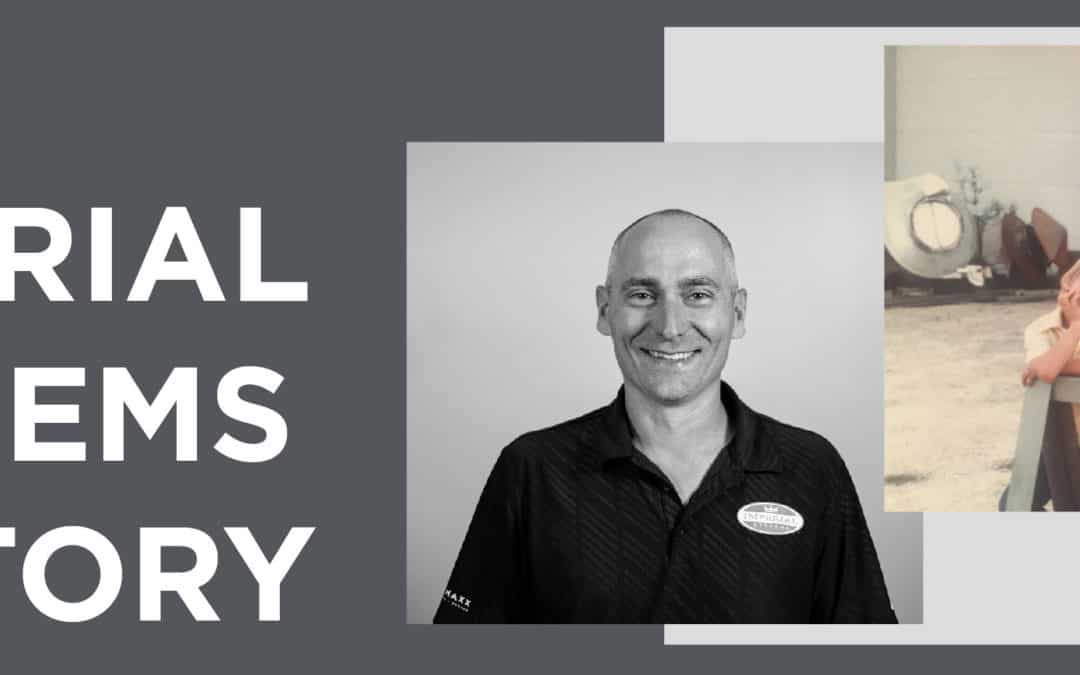
by Scott Stearns | Nov 26, 2018 | Hidden from Archive

For several years, I worked as a Sales Rep for a large, European‑owned dust and fume collection company. Like most of the big companies in this industry, they had an aggressive way of doing business that was not consistent with how I believed things should be done. They called it “filling holes,” which was the practice of sizing dust and fume collection equipment large enough to perform well, but not at a capacity that would minimize periodic filter replacement. Regrettably, I condoned it for far too long. How did I reach the tipping point where I decided to start my own business? My story starts with my granddad.
I grew up in a family-owned and operated sheet metal shop. My granddad, a loving and driven man, had me slagging parts and sorting hardware by age seven. I spent every minute of every summer in and around the shop. It was a noisy, greasy and busy place – and I loved it! At an early age, I was fascinated to learn what a cyclone and baghouse were and how they were built. Warm family gatherings always included shop talk and I would eagerly sit in on those conversations, listening to every word. Today is no different. I still love fabrication and never pass up an opportunity to tour a fabrication facility. Dust and fume filtration is truly in my blood.
I started as a sales rep in my early 20’s. At the time, the industry was led by a couple of company giants who promoted the practice of filling holes. I was quickly taught to stretch the limits, get the orders and move on to more projects. This philosophy was fundamentally against what I had learned growing up in the family business. Unfortunately, top dust and fume collection companies continue with this practice today. But being ambitious and eager to please, I unwisely suppressed my opinion of it and sold collectors in this manner for years. Increasingly unhappy with my circumstance, conviction compelled me to start my own business.
In October 2001, I founded Imperial Systems with the mission that my company would build the best dust and fume collection equipment on earth. Our collectors would be designed and built from an end user’s point of view, last longer and filter better than any other collector on the market. Growing up in manufacturing, I knew that one of our strongest attributes was that we were a company that knew how to design, build and install complete systems from start to finish. This was a distinct advantage over the big companies and still holds true today. Every one of our sales engineers has spent time in the field installing systems so that they understand what they’re selling and what it takes to get equipment properly designed for a dependable installation.
For years we successfully built and sold cyclones, baghouses, ducting and airlocks. In 2010, I decided to expand the company by building cartridge style dust collectors. When we started, we copied a major brand’s collector almost exactly. Unfortunately, this was a mistake for several reasons. For one, it did not differentiate us from our competitors. The technology was old, and by replicating it we made ourselves a “me-too” brand. The only way to compete was on price, which immediately put us at a disadvantage. We were the smallest industrial dust collector manufacturer in the industry. Why would someone buy from us over one of the larger, more established companies? When it was all about price, we would win a job but lost money as a consequence. Regrettably, I realized that copying a competitor was a short-sided strategy. Being a “me-too” company is not what I had envisioned as our future.
So, we regrouped and made some innovative design changes. We committed to build a better cartridge dust collector and differentiate ourselves from our competitors. It was then that I realized that our strength was in our differences. From that point on, we reminded ourselves of this insight at every design and engineering meeting. It became a mantra as we insisted on being innovators, not copiers. That’s when our business started to thrive. Independent sales reps started calling us unexpectedly to represent our product line. We started winning the majority of the quotes that we were working on. It was a new beginning for the newly designed CMAXX, now the flagship of Imperial Systems.
I am proud of the new approach and success that Imperial Systems has had with the CMAXX. The innovations came from customers reporting to us the problems with other equipment that they have had for years. They spoke and we listened. Because of these innovations and loyal customers, Imperial Systems is now the most progressive dust and fume collection company in the industry today. Ironically, CMAXX is now the most copied collector on the market!
I guess you can say we are now doing things right. We’ve emerged with dignity from being an ambitious imitator to an industry thought leader. We are transparent about the solutions we provide to fill needs, not holes. I’m so grateful to my granddad for his influence on my life. And I thank every member of the Imperial Systems team for fulfilling my true vision of this company.
Read more
![KST Values of Common Combustible Dusts [Infographic]](https://www.isystemsweb.com/wp-content/uploads/2018/06/KST-Infographic-Featured-image-01-1080x675.jpg)
by Scott Stearns | Jun 25, 2018 | Uncategorized

This infographic identifies the KST values of common metal, chemical, natural, and agricultural dusts found in manufacturing processes. KST is a general measurement of explosiveness and is a standard measurement for dust collection system design purposes. The explosive dust particle size range is between 10 and 95 microns.
Flame Physics
KST is used to determine the speed and pressure of a flame front in the event of an explosion. To calculate the KST values of these common dusts, thermal expansion (K), speed (S), and temperature (T) are used. Once KST is determined, it falls into one of four categories:
- ST-0: Kst 0, Pmax 10
- ST-1: Kst 1-200, Pmax 10
- ST-2: Kst 201-300, Pmax 10
- ST-3: Kst 300 and above, Pmax 12
Descending KST Values of Common Dusts
These common dusts are listed in decreasing order of their KST values. The higher the KST number, the more explosive the dust is. Note that Magnesium dust and Aluminum dust with KST values of 508 and 415, respectively, are extremely explosive. Whereas, Poly Vinyl Chloride (PVC) and Charcoal with KST values of 46 and 10, respectively, are not very explosive. For reference, Sand with a KST value of 0 is not explosive at all. Please note that this information should be used as a reference only and should not be used in place of a dust test.
Explosion Prevention Products
Imperial Systems offers dust collection systems and accessories that help prevent an explosion in your factory. The CMAXX dust and fume collector is certified as an In-Line Deflagration Arrester with DeltaMAXX IDA filters. It has been proven to isolate a deflagration and stop a flame front. We also offer the Spark Trap, an Explosion Isolation Valve, a fast-acting slide gate, and a flameless explosion vent. Our Cast Iron Rotary Airlocks and Rhino Drum explosion-tested drum kit can be used on the discharge of CMAXX or the BRF Baghouse dust collector.
Read more
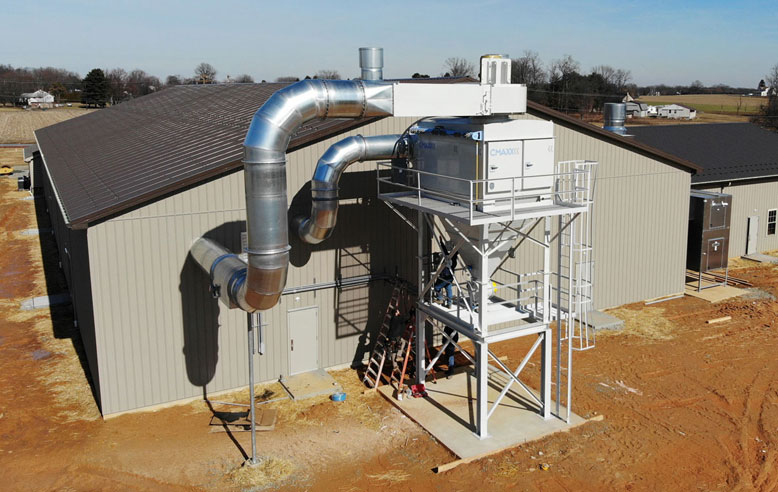
by Scott Stearns | Apr 11, 2018 | Woodworking
In Lancaster, in the heart of the Pennsylvania Amish and Mennonite communities, woodworking is a major industry. Traditionally, the wood shop dust collector system of choice for these furniture and cabinet makers has been the baghouse. However, the CMAXX cartridge dust and fume collector can work just as well as a baghouse on many of these applications. We recently had an opportunity to work with one of our reps, Isaac Lapp from Lapp Millwright, to introduce the CMAXX to a cabinet maker to handle their wood dust. Fortunately, Isaac Lapp and our own Charlie Miller were able to work with this customer to help him design the system he needed.
“Our competitors were in there at the time telling them that a cartridge collector absolutely would not work,” Isaac says. “Charlie was able to show them that it would work, and now it’s there and working great.”
A CMAXX system can be the perfect solution for certain wood dust applications. The efforts of Charlie and Isaac convinced the customer to take the risk of trying a cartridge collector, and now they are very pleased that they did.
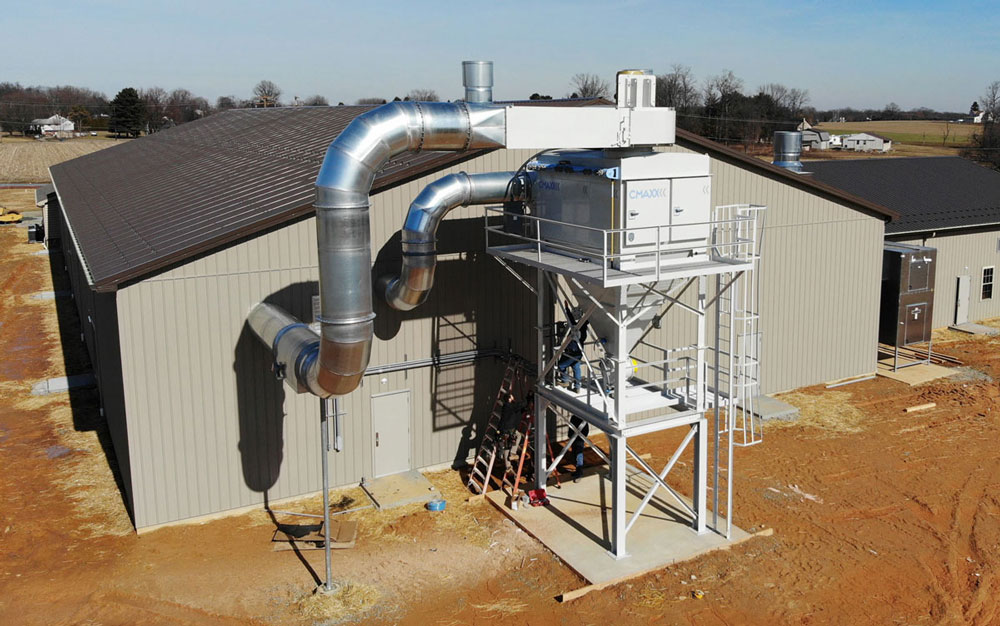
Part of putting the customer at ease about this decision was Charlie’s commitment to walking them through the process from the very early design phases to the end product. In this application, where the capture points are on saws, sanders, and routers, the wood dust is generally very fine. The customer has noted that the system has given them strong airflow on all of the capture points and maintained that airflow, meaning the cartridges are functioning exactly as they should.
For this customer, one of the strongest selling points for the cartridge collector over a baghouse was the size of the collector. A traditional round baghouse would have been nearly 60 feet high to suit the needs of this customer. The CMAXX footprint is very neat and efficient compared to a towering BRF.

This customer needed the wood shop dust collector to be set up so that trucks could drive underneath it. The extra height added by a baghouse would have been excessive. Despite the initial uncertainty about a cartridge collector, it was an option that kept the collector profile much smaller than a baghouse.
Since this customer has seen great success with the CMAXX collector, other customers are making the leap and putting our cartridge collectors on their wood applications. With a “foot in the door” with a cartridge collector at a brand new wood dust facility, others have been willing to take another look.
When one customer sees success with a product, others are more likely to follow, and Isaac reports that he’s getting a much better reception now when suggesting a CMAXX for applications.
Baghouses and cartridge collectors can both work well for woodworking dust collection, but many people are resistant to the idea of cartridge collectors working for wood. The truth is that for many wood shop dust collector applications, a cartridge collector works just as well, and it offers the option of a much smaller footprint, easier maintenance, and excellent efficiency.
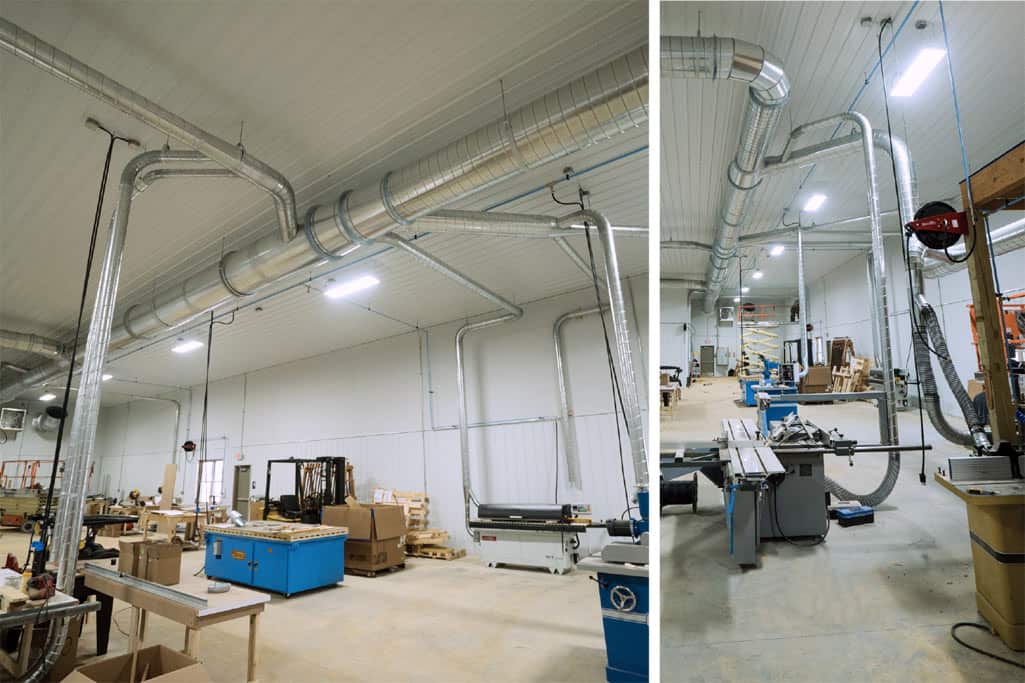
Read more in our blog post: Selecting an Industrial Dust Collector for Woodworking?
Read more
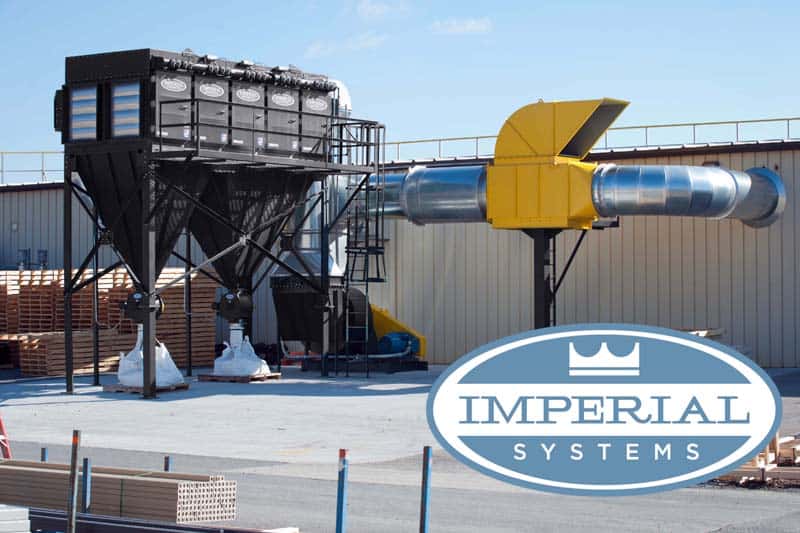
by Imperial Systems | Oct 7, 2014 | Uncategorized
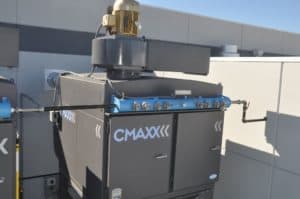 Imperial Systems has changed the roof design of all CMAXX Cartridge Dust Collectors to have a solid one-piece roof. The CrownTECHTM roof on the CMAXX is fully reinforced and slightly positively bowed to make the unit stronger and assist with water runoff. Even with these changes, the CMAXX dust collection system still holds the title for the only modular dust collector with no external bolt holes.
Imperial Systems has changed the roof design of all CMAXX Cartridge Dust Collectors to have a solid one-piece roof. The CrownTECHTM roof on the CMAXX is fully reinforced and slightly positively bowed to make the unit stronger and assist with water runoff. Even with these changes, the CMAXX dust collection system still holds the title for the only modular dust collector with no external bolt holes.
The three key features of the new roof design are: 1. Zero bolt holes, 2. No individual panels, and 3. No roof seams between the modular.
Imperial System’s competitor’s similar unit, with 16 cartridges, has close to 68 feet of sealed connection and approximately 160 bolt holes with over 1000 holes throughout the collector from the bolted panel design. This old style of fabrication leads to potential leaks and holding water resulting in rust and damaged equipment from freezing.
The CMAXX Dust Collector stands tall on the claim of no external bolt holes with an industry best 15 year warranty.
The new CrownTECHTM roof is set to display this year at Fabtech 2016 in Las Vegas. Be sure to stop by booth # N1825 to check out Imperial’s products.
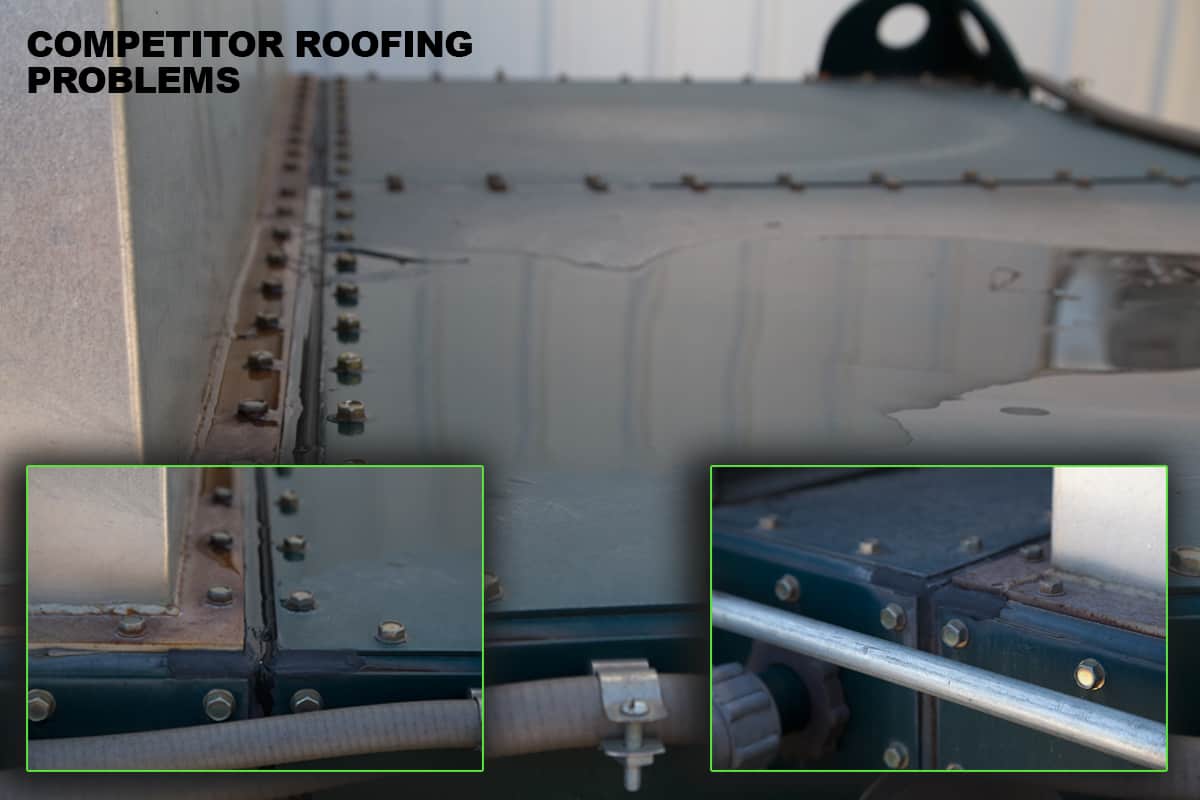
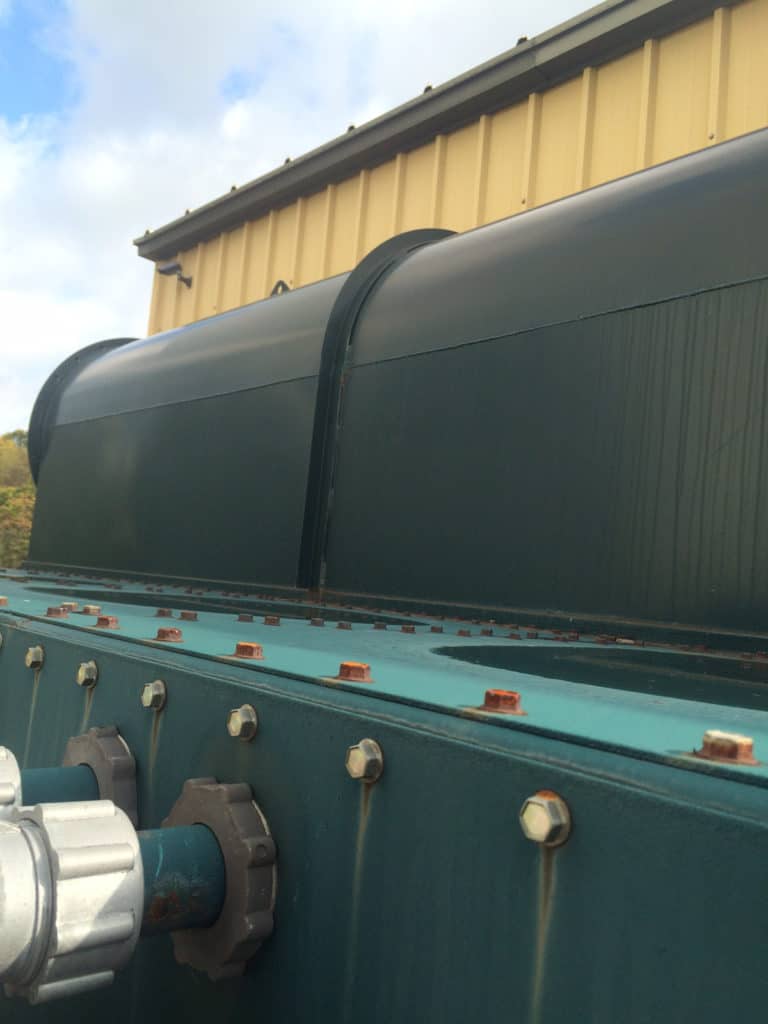
These pictures show how the competitors roof holds water from the panels being under vacuum. It also shows corrosion around the external bolts and bolt holes
Read more
![Plasma Cutting & Hexavalent Chromium [Infographic]](https://www.isystemsweb.com/wp-content/uploads/2018/12/white-paper-header-01-1080x675.jpg)



![KST Values of Common Combustible Dusts [Infographic]](https://www.isystemsweb.com/wp-content/uploads/2018/06/KST-Infographic-Featured-image-01-1080x675.jpg)






 Imperial Systems has changed the roof design of all CMAXX Cartridge Dust Collectors to have a solid one-piece roof. The CrownTECHTM roof on the CMAXX is fully reinforced and slightly positively bowed to make the unit stronger and assist with water runoff. Even with these changes, the CMAXX dust collection system still holds the title for the only modular dust collector with no external bolt holes.
Imperial Systems has changed the roof design of all CMAXX Cartridge Dust Collectors to have a solid one-piece roof. The CrownTECHTM roof on the CMAXX is fully reinforced and slightly positively bowed to make the unit stronger and assist with water runoff. Even with these changes, the CMAXX dust collection system still holds the title for the only modular dust collector with no external bolt holes.

